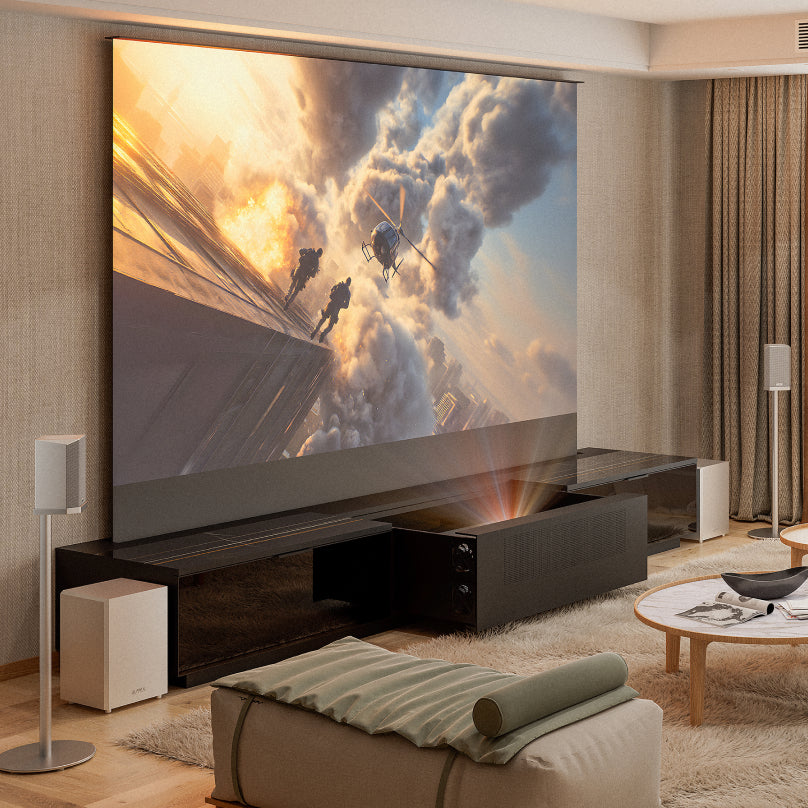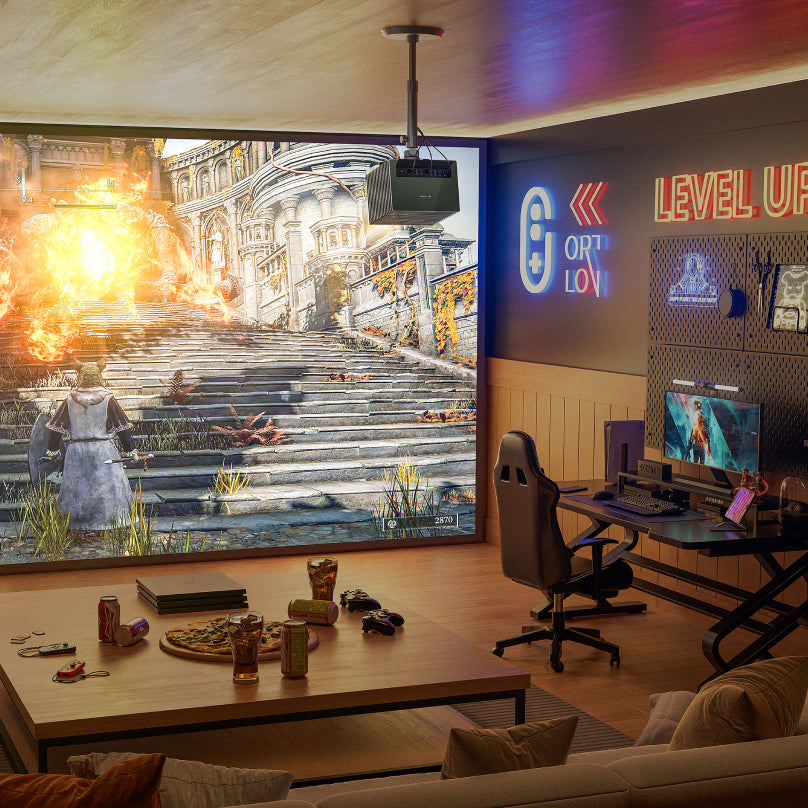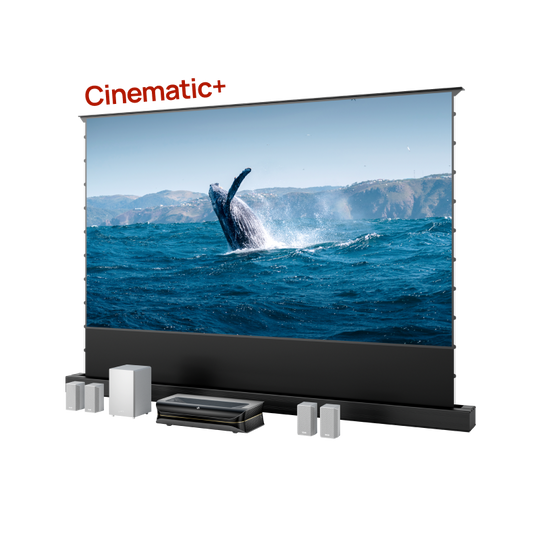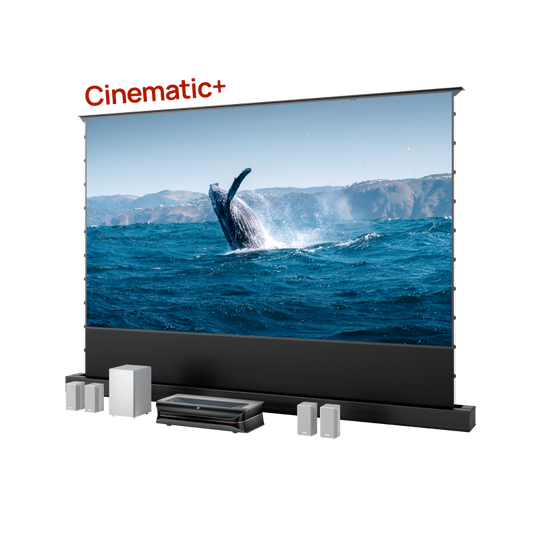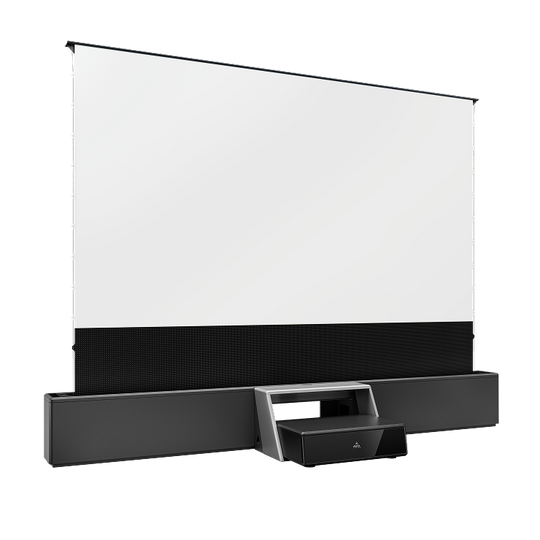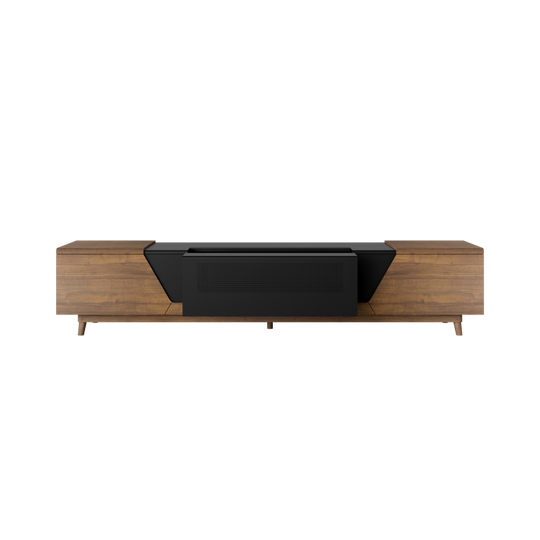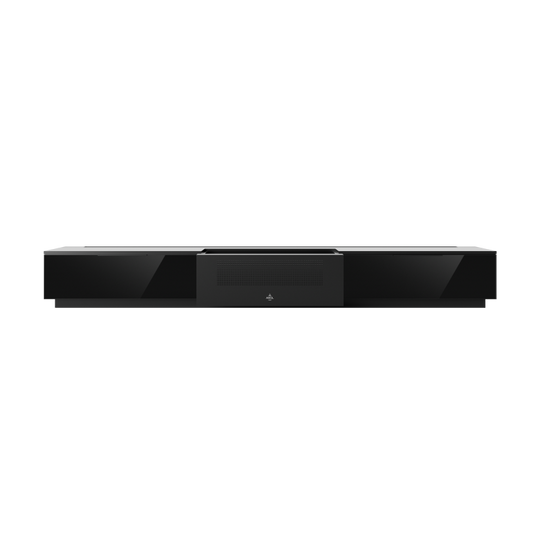As technology evolves, many new and improved resolutions are coming forward. When shopping for projectors, you may have come across these terms, FHD, QHD, or UHD. While each resolution is distinct from each other, what do these terms actually mean? To answer this question, we have curated this comprehensive guide on FHD vs QHD vs UHD and have also provided insights into choosing the ideal projector.
What is FHD (Full High Definition)?
To begin, the first resolution is FHD which stands for Full High Definition. This resolution features 1920 x 1080 pixels and is also referred to as 1080p as it offers 1080 horizontal lines of vertical resolution displayed in a non-interlaced format. FHD produces sharp and vivid images and has a 16:9 aspect ratio which is ideal for widescreen viewing hence, making it popular among modern monitors, TVs, and smartphones.
FHD is convenient in many ways. FHD screens are affordable and cheaper than their higher-resolution alternatives, making them a popular choice among budget-conscious individuals. Also, it is highly compatible with a wide range of devices. Moreover, FHD requires less processing from the GPU and the CPU, making it easier to achieve high frame rates and smooth performance.
What is QHD (Quad High Definition)?
QHD stands for Quad High Definition and features a resolution of 2560 x 1440 pixels. It provides 1.77 times more pixels than an FHD display and four times the standard HD (720p). QHD is also referred to as 1440p or 2K and offers a middle ground between FHD and UHD, ensuring affordability and performance.
QHD has a 16:9 aspect ratio and is common in gaming monitors and premium smartphones. Since QHD has a higher pixel count than FHD, it offers even sharper images, making it ideal for gaming and professional use. As QHD has more pixels, it offers more screen space for multitasking and enhancing productivity, which is ideal for professional work.
What is UHD (Ultra High Definition)?
After discussing FHD vs QHD, let’s learn about UHD. UHD stands for Ultra High Definition and features an impressive resolution of 3840 x 2160 pixels. UHD is also known as 4K resolution which has become quite popular among gaming enthusiasts and TV owners. There is a huge difference between FHD and UHD as it offers even sharper graphics and fine details, bringing the images and colors to life.

FHD vs QHD vs UHD: Detailed Comparison
Considering the FHD vs QHD vs UHD debate, there exists substantial differences between the three types of resolution so let’s analyze them one by one.
Resolution and Pixel Density
FHD features a 1920 x 1080 pixel resolution whereas QHD features 2560 x 1440 pixels. UHD features the highest resolution, i.e., 3840 x 2160 pixel resolution. UHD has four times the number of pixels compared to FHD, hence producing sharp and detailed images.
Performance and Hardware Requirements
Since FHD and QHD feature fewer pixels, they don’t require powerful hardware. In contrast, UHD features twice as many pixels than the latter hence they require a powerful hardware setup to display a higher resolution.
Image Quality and Clarity
When it comes to image quality, UHD takes the lead as it displays a 4K resolution. This is the most in-demand resolution among gaming consoles due to its impressive graphics and picture quality. QHD offers 2K resolution which is optimal for professional use, whereas FHD offers a lower resolution, making it perfect for budget-conscious individuals.
Choosing the Right Projector Resolution
If you are wondering which projector resolution you should aim for, consider the following factors.
First of all, determine your intended use. Are you looking to get a projector for your home or professional setting as this choice influences the choice of resolution? Next, make sure your main source such as your laptop or a streaming device can support the projector’s resolution.
In this regard, 1080p projectors are the best as they ensure compatibility with various devices. You must also consider your budget as high-end projectors come with a high price tag. Check if you have the required budget to make a hefty investment.
FHD projectors are ideal for smaller screens and short viewing distances and are also affordable, making them the most common choice. QHD projectors are better than FHD projectors and lower than UHD projectors in terms of graphics and balance affordability with performance. UHD projectors are optimal for large screens and are a bit expensive. They deliver the best performance.
In a nutshell, FHD is suitable for individuals with a tight budget, QHD for individuals who want an improved image quality but without a high price tag, and UHD for gaming enthusiasts or those opting for large displays.
If you are looking for an ideal projector for your home theater, consider the AWOL Vision 4K 3D Triple Laser LTV-3500 Pro Projector that supports 4K and 1080p resolution and offers stunning 3D capabilities for an enhanced viewing experience. If you’re chasing a big screen and immersive gaming experience, then AWOL Vision LTV-3500 Pro is also a good choice. It delivers a Turbo Mode specifically designed for gamers, supporting 4K @60Hz with an ultra-low input lag of 15ms. For even rapid-paced games, it handles 1080p @120Hz with an input lag of just 8ms. This ensures every action on screen is instantaneous and responsive as real life.
Conclusion
Before making a purchase, it is essential to understand the differences between FHD, QHD, and UHD. Each type has its own benefits and limitations, so the ultimate choice depends on your budget and preferences.

